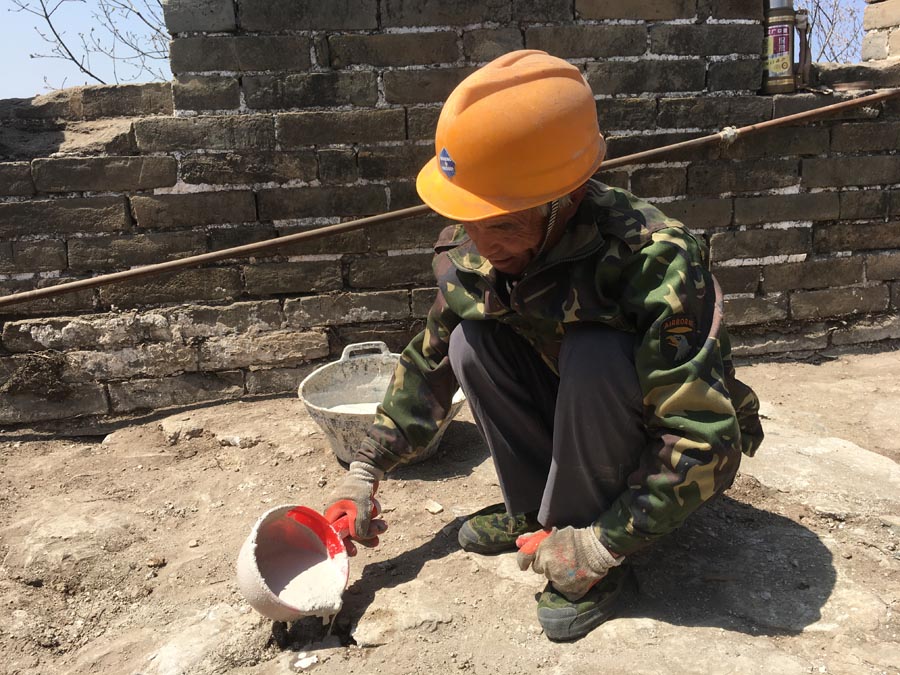 |
|
A worker fills cracks on the wall using material made from lime and sticky rice. [PHOTO BY JANG DONG AND WANG KAIHAO/CHINA DAILY] |
"But we cannot set a uniform standard when fixing the wall. Each section has its own characteristics, so we have to tailor plans to each one," he adds.
In the national-level conservation plan, more public participation in the restoration is also called for. Consequently, for the Jiankou restoration, some unprecedented things happened. Tencent Holdings Ltd, a Chinese tech giant, donated 10 million yuan, which it raised through crowdfunding online.
US tech company Intel Corp also cooperated with the China Cultural Relics Protection Foundation to help improve the restoration plan by using drones and artificial intelligence.
Cheng says some issues remain. For example, it is difficult to recruit experienced bricklayers like Li. They are paid about 280 yuan a day, which some workers don't find attractive.
"Besides, the experienced workers are getting old. And even if some new workers are willing to join our squad, they need to be good climbers, too."
Shu says systematic training for restoration is needed. A Great Wall conservation center will be set up in Beijing in the near future.
"Historical files on the Great Wall can be studied there and we can nurture talent with professional knowledge and practical experience," he says of the future facility.
But Jiankou is unlikely to be developed as a destination for mass tourist even after restoration, because of the rough terrain.
"It will be accessed by a limited number of visitors in the future like Machu Picchu (the Inca site in Peru that follows a visitor reservation system)," he says.
Contact the writer at wangkaihao@chinadaily.com.cn